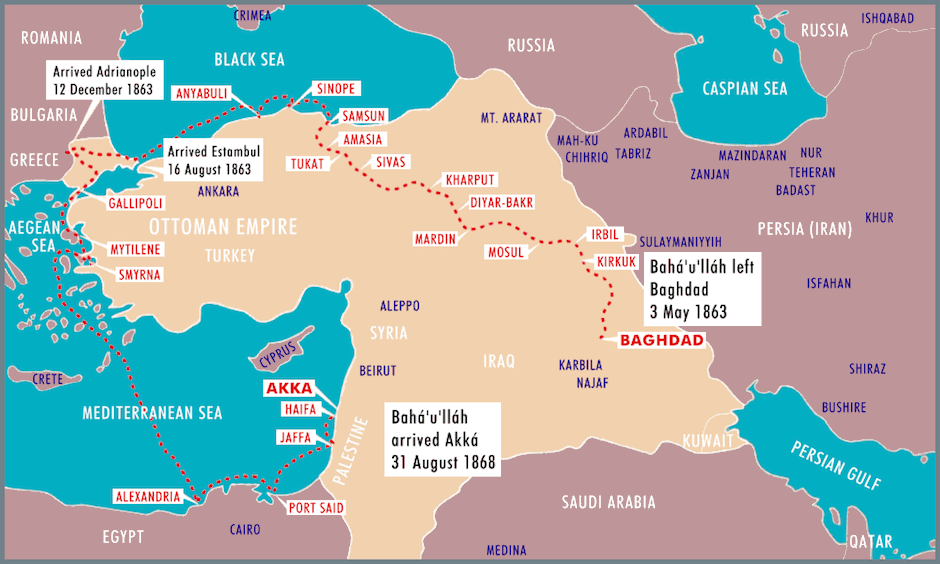In a troubled time and place—Shiraz, Persia in 1844—a young merchant and mystic named Siyyid Ali Muhammad made a startling announcement: that he brought the world a new message from God.
Called The Bab (pronounced bob), which means “The Gate,” this new prophet created a furor in Persian society with his revolutionary teachings—spiritual and moral transformation, women’s emancipation and the raising up of the poor. The Bab also proclaimed that he had come to herald the birth of a new, universal revelation, one greater than his own, and to prepare the way for “He whom God shall make manifest”—the Promised One of all ages. The Babi Faith spread quickly, electrifying the masses and provoking severe reactions from the government and the clergy. Tens of thousands of Babis, including the Bab himself, were tortured, massacred and publicly executed for their beliefs.
The inauguration of the Bab’s message and mission set Baha’i history in motion.

After the Bab’s execution in 1850, Baha’u’llah gradually assumed the leadership of the Babis. In prison in 1852, Baha’u’llah received the revelation that inspired the Baha’i Faith, and fulfilled the prophecies and promises of the Bab.
The Baha’i Faith now counts millions of followers across every region, continent and nation of the world. Baha’u’llah’s teachings emphasize justice, equality and religious unity, so even today many Baha’is in Iran and other Middle Eastern countries still face persecution for their beliefs.
Baha’u’llah suffered a life of torture and deprivation in order to bring the world a new set of spiritual teachings. Persecuted relentlessly, he still persevered in delivering that message, which has now begun to deeply affect and alter humanity’s future.

